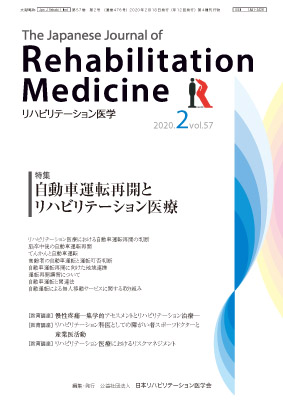Volume 57, Issue 2
Displaying 1-16 of 16 articles from this issue
- |<
- <
- 1
- >
- >|
-
2020Volume 57Issue 2 Pages 108
Published: February 18, 2020
Released on J-STAGE: March 25, 2020
Download PDF (292K)
-
2020Volume 57Issue 2 Pages 110-116
Published: February 18, 2020
Released on J-STAGE: March 25, 2020
Download PDF (1688K) -
2020Volume 57Issue 2 Pages 117-120
Published: February 18, 2020
Released on J-STAGE: March 25, 2020
Download PDF (1073K) -
2020Volume 57Issue 2 Pages 121-126
Published: February 18, 2020
Released on J-STAGE: March 25, 2020
Download PDF (1788K) -
2020Volume 57Issue 2 Pages 127-133
Published: February 18, 2020
Released on J-STAGE: March 25, 2020
Download PDF (1805K) -
2020Volume 57Issue 2 Pages 134-138
Published: February 18, 2020
Released on J-STAGE: March 25, 2020
Download PDF (1740K) -
2020Volume 57Issue 2 Pages 139-143
Published: February 18, 2020
Released on J-STAGE: March 25, 2020
Download PDF (3279K) -
2020Volume 57Issue 2 Pages 144-148
Published: February 18, 2020
Released on J-STAGE: March 25, 2020
Download PDF (1110K) -
2020Volume 57Issue 2 Pages 149-153
Published: February 18, 2020
Released on J-STAGE: March 25, 2020
Download PDF (1123K)
-
2020Volume 57Issue 2 Pages 154-159
Published: February 18, 2020
Released on J-STAGE: March 25, 2020
Download PDF (1318K) -
2020Volume 57Issue 2 Pages 160-166
Published: February 18, 2020
Released on J-STAGE: March 25, 2020
Download PDF (1632K) -
2020Volume 57Issue 2 Pages 167-173
Published: February 18, 2020
Released on J-STAGE: March 25, 2020
Download PDF (1583K)
-
2020Volume 57Issue 2 Pages 174-182
Published: February 18, 2020
Released on J-STAGE: March 25, 2020
Advance online publication: December 16, 2019Download PDF (2171K)
-
2020Volume 57Issue 2 Pages 183
Published: February 18, 2020
Released on J-STAGE: March 25, 2020
Download PDF (384K)
-
2020Volume 57Issue 2 Pages 184-185
Published: February 18, 2020
Released on J-STAGE: March 25, 2020
Download PDF (763K)
-
2020Volume 57Issue 2 Pages 186
Published: February 18, 2020
Released on J-STAGE: March 25, 2020
Download PDF (415K)
- |<
- <
- 1
- >
- >|
